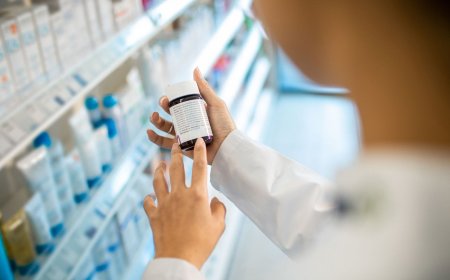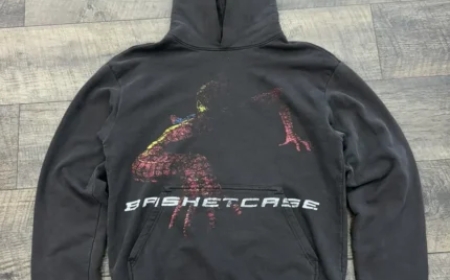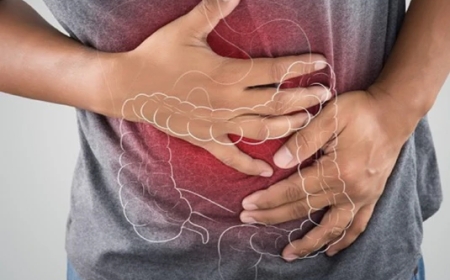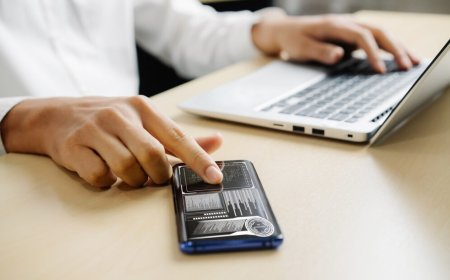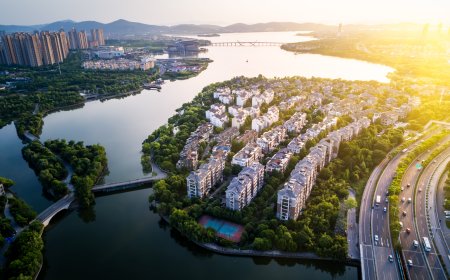How to Photograph Events in Columbus
How to Photograph Events in Columbus Photographing events in Columbus, Ohio, is more than capturing moments—it’s about preserving the energy, emotion, and essence of a community in motion. From the vibrant street festivals of Short North to the quiet dignity of a downtown graduation, Columbus offers a rich tapestry of events that demand more than just point-and-shoot photography. Whether you’re a
How to Photograph Events in Columbus
Photographing events in Columbus, Ohio, is more than capturing moments—it’s about preserving the energy, emotion, and essence of a community in motion. From the vibrant street festivals of Short North to the quiet dignity of a downtown graduation, Columbus offers a rich tapestry of events that demand more than just point-and-shoot photography. Whether you’re a professional event photographer, an aspiring hobbyist, or a local business owner documenting your organization’s activities, mastering the art of event photography in this dynamic city requires technical skill, cultural awareness, and strategic planning.
Columbus is a city of contrasts: historic neighborhoods blend with cutting-edge innovation, collegiate spirit meets corporate energy, and multicultural celebrations unfold year-round. Each event presents unique lighting challenges, crowd dynamics, and storytelling opportunities. Understanding these nuances is what separates good event photos from unforgettable ones. This guide will walk you through every stage of photographing events in Columbus—from pre-event preparation to post-processing and delivery—equipping you with the knowledge to consistently produce compelling, professional-grade imagery that resonates with audiences and honors the spirit of the city.
Step-by-Step Guide
1. Research the Event Type and Venue
Before you even pack your camera bag, invest time in understanding the nature of the event you’ll be photographing. Is it a large-scale outdoor festival like the Columbus Arts Festival? A formal corporate gala at the Ohio Theatre? A high-energy college football tailgate at Ohio State’s stadium? Each requires a different approach.
Visit the venue ahead of time if possible. Note the lighting conditions—does it rely on natural daylight, overhead fluorescents, or dim ambient lighting? Are there architectural features like stained glass, neon signs, or reflective surfaces that could enhance or interfere with your shots? For example, photographing at the Franklin Park Conservatory during its holiday lights display demands different exposure settings than capturing a panel discussion in a windowless conference room at the Greater Columbus Convention Center.
Also, research the event’s history. What are the traditional moments? At the Columbus Pride Parade, rainbow flags, drag performances, and family zones are staples. At the Columbus International Film & Animation Festival, filmmakers and red carpet arrivals are key. Knowing these elements helps you anticipate and capture signature moments rather than reacting too late.
2. Confirm Logistics and Permissions
Event photography often involves legal and logistical considerations. Always secure written permission from the event organizer or venue manager. Some venues, like the Columbus Museum of Art or the Ohio Statehouse, have strict policies regarding commercial photography, tripods, or flash usage. Failure to comply can result in removal or legal consequences.
Clarify your access level. Will you be allowed backstage? Can you move freely among the crowd, or are you restricted to designated photo zones? At events like the Ohio State Fair, photographers may need a media pass to access restricted areas like the livestock barns or midway rides. If you’re photographing for a client, ensure you understand their expectations: Do they need candid shots, posed portraits, or both? Are there specific branding elements they want highlighted?
Also, confirm the event schedule. Know when the keynote speaker arrives, when the parade begins, or when the fireworks are set to launch. Missing the opening act or the first dance can be a career-ending mistake. Create a shot list based on the timeline and share it with your team or client if applicable.
3. Pack the Right Gear for Columbus Conditions
Columbus weather is unpredictable. Summer events can be sweltering and humid, while winter gatherings—like the Holiday Lights at Franklin Park Conservatory—bring freezing temperatures and potential snow. Your gear must be prepared for these extremes.
Essential equipment includes:
- A full-frame DSLR or mirrorless camera (for superior low-light performance)
- At least two lenses: a fast wide-angle (e.g., 24mm f/1.4) for group shots and tight spaces, and a telephoto (e.g., 70-200mm f/2.8) for capturing distant subjects without intrusion
- Extra batteries and memory cards (shoot in RAW format; Columbus events often produce hundreds of images)
- A sturdy tripod or monopod for long exposures during evening events
- External flash with diffusers or bounce cards (many venues prohibit direct flash, so diffusion is critical)
- Weather-sealed camera body and lens, or protective rain covers
- Portable lighting (LED panels or ring lights) for indoor interviews or dark corners
- Comfortable footwear and a supportive camera strap (you’ll be on your feet for hours)
Pro tip: Carry a small towel or silica gel packs to combat condensation when moving between cold and warm environments—common during winter-to-summer transitions in Ohio.
4. Arrive Early and Scout the Best Spots
Arriving at least 60–90 minutes before the event begins gives you a critical advantage. Use this time to walk the perimeter, identify backdrops that complement your subject, and test your camera settings under real conditions.
For outdoor events like the German Village Festival, position yourself where sunlight hits subjects at a flattering angle—typically early morning or late afternoon. Avoid shooting directly into the sun; instead, use backlighting to create silhouettes or rim lighting for dramatic effect.
Indoor venues like the Southern Theatre or the Newport Music Hall often have poor lighting and limited space. Find elevated positions—balconies, stairwells, or even the stage itself if permitted—to capture wide, contextual shots. Scout for natural reflectors: white walls, mirrors, or light-colored floors can bounce light onto subjects without needing flash.
Also, identify escape routes and backup locations. If a sudden rainstorm hits during the Columbus Riverfront Festival, where can you relocate? Knowing the venue’s layout saves panic and keeps you shooting.
5. Master Exposure Settings for Dynamic Environments
Event lighting is rarely consistent. One moment you’re in bright daylight; the next, you’re in a dimly lit ballroom. Manual exposure settings give you control, but you must be ready to adapt quickly.
For daylight events: Use Aperture Priority (Av) mode with an aperture between f/2.8 and f/5.6 to maintain depth of field while isolating subjects. Set ISO to 100–400 to minimize noise. Use a fast shutter speed (1/500s or higher) to freeze motion, especially during dance floors or athletic events like the Columbus Marathon.
For low-light events: Switch to Manual mode. Open your aperture as wide as possible (f/1.4–f/2.8). Increase ISO to 1600–6400 depending on your camera’s noise performance. Use a shutter speed no slower than 1/60s to avoid motion blur—if you must go slower, use a tripod or stabilize against a wall. Consider using a slow-sync flash to blend ambient light with flash illumination.
Always shoot in RAW. This gives you maximum flexibility in post-processing to recover highlights from stage lights or restore shadow detail in dark corners of the Columbus Commons.
6. Capture the Full Story: Emotion, Context, and Details
Great event photography tells a story—not just a series of faces. Think in sequences: the setup, the anticipation, the peak moment, and the aftermath.
Start with wide establishing shots: a crowd gathered at the Columbus Commons for a free concert, the entrance to the Ohio Statehouse during a political rally, or the colorful booths of the Italian Village Festival. These set the scene.
Then move to medium shots: a child laughing as they eat cotton candy at the Ohio State Fair, a couple sharing a dance at a wedding reception in the LeVeque Tower, or a speaker gesturing passionately during a TEDx talk at the Columbus Public Library.
Finally, capture the details: the texture of a handmade quilt at the Ohio Craft Brewers Festival, the reflection of lights in a puddle after rain at the High Street Festival, the hands of a vendor packing up at the end of the night. These small moments often become the most cherished images.
Don’t forget to photograph the people behind the scenes: the volunteers loading equipment, the sound technicians adjusting mics, the security staff keeping order. These images humanize the event and are often appreciated by organizers.
7. Interact with Subjects—But Respect Boundaries
Photography is not just technical—it’s interpersonal. Engaging with your subjects builds trust and leads to more natural expressions. A simple smile and nod before taking a photo can put someone at ease.
However, be mindful of cultural and personal boundaries. At religious events like the Columbus Diwali Festival or the Islamic Center’s Eid celebration, some attendees may prefer not to be photographed. Always ask permission before photographing children, and never force a pose. If someone declines, respect it immediately.
At large events, avoid blocking walkways or interrupting performances. Use your telephoto lens to capture candid moments from a distance. The goal is to document, not to intrude.
8. Shoot in Batches and Review Constantly
Don’t rely on memory alone. Every 20–30 minutes, pause and review your shots on the camera’s LCD. Are your exposures consistent? Are your focus points accurate? Are you repeating the same compositions?
Look for technical errors: blurred faces, overexposed highlights, or cluttered backgrounds. Adjust accordingly. If you notice a trend—say, all your portraits are too dark—you may need to recalibrate your flash output or ISO.
Also, check for emotional continuity. Are you capturing joy, surprise, concentration? If your images feel flat, shift your perspective. Get lower. Move closer. Wait for the right expression.
9. Backup and Organize Immediately
After the event, do not wait. Transfer your images to two separate storage devices immediately. Use a laptop or portable SSD with enough capacity to hold your entire shoot. Label folders clearly: “ColumbusArtsFestival_2024_0615” or “OSUGraduation_May2024”.
Use metadata to tag images with keywords: location (e.g., “Short North”), event type (“music festival”), subject (“children,” “performers”), and date. This makes future searches efficient. Consider using Adobe Lightroom or Capture One for cataloging and rating your best shots.
Never delete originals. Even “bad” shots may be useful later for comparison or editing reference.
10. Deliver with Purpose
Delivery isn’t the end—it’s the beginning of impact. How you present your photos affects how they’re received.
If you’re working for a client, provide a curated gallery—not 1,000 unedited images. Select 50–100 of your strongest shots. Edit them for color balance, cropping, and exposure. Avoid heavy filters; authenticity resonates more in event photography.
Deliver via secure cloud link (Google Drive, Dropbox, or Pixieset) with download permissions. Include a brief caption sheet identifying key moments, people, and locations. If it’s a nonprofit event, offer a free print for their website or newsletter. If it’s a corporate client, provide high-res files for marketing materials and low-res versions for social media.
Always ask for feedback. Did you capture what they wanted? What could be improved next time? This builds long-term relationships and refines your craft.
Best Practices
Understand Columbus’s Cultural Diversity
Columbus is one of the most diverse cities in the Midwest, with over 150 languages spoken and more than 60 cultural festivals held annually. As a photographer, your role is not just to document, but to represent respectfully.
At events like the African Heritage Festival or the Hmong New Year Celebration, cultural attire, rituals, and gestures carry deep meaning. Research the significance of these elements beforehand. Avoid reducing traditions to exotic backdrops. Instead, focus on authenticity: a grandmother teaching a child to dance, hands weaving traditional textiles, or the communal sharing of food.
When photographing religious or spiritual events, be discreet. Turn off flash, avoid direct eye contact if culturally inappropriate, and follow the lead of attendees. Your presence should be unobtrusive, not performative.
Work With Natural Light Whenever Possible
While flash can be useful, natural light creates more authentic, emotionally resonant images. Columbus’s spring and fall light—soft, golden, and directional—is ideal for outdoor events.
Use the “golden hour” (the hour after sunrise and before sunset) to your advantage. During the Columbus Jazz Festival, the warm light on the Ohio River waterfront enhances skin tones and adds depth to the crowd. For indoor events, position subjects near windows or skylights. Avoid harsh midday sun; if you must shoot then, use reflectors or find shaded areas.
Always Have a Backup Plan
Columbus weather is notoriously fickle. A sunny afternoon can turn into a thunderstorm by dusk. Always have a contingency plan:
- For outdoor events: Identify nearby indoor alternatives (e.g., the Columbus Museum of Art’s courtyard can serve as a sheltered photo zone).
- For equipment: Carry waterproof cases and silica gel packs to protect gear from humidity.
- For scheduling: Confirm with organizers if the event will be postponed or relocated, and adjust your timeline accordingly.
Also, have a backup camera body. If your primary camera fails during a keynote speech or the main parade float, you must be ready to continue without missing a beat.
Build Relationships With Event Organizers
Event photography is a relationship-driven field. The more you work with local organizations—the Columbus Arts Council, the Columbus Metropolitan Library, the Greater Columbus Convention & Visitors Bureau—the more access and trust you’ll earn.
Offer to donate a few prints to nonprofits for their fundraising campaigns. Share your images on social media with proper credit. Tag the event, the venue, and key participants. This visibility benefits everyone and opens doors to future opportunities.
Stay Ethical and Transparent
Never alter the context of an image. Don’t move people to create a “better” composition. Don’t delete individuals from group photos unless explicitly requested (and even then, document the change).
Respect copyright. If you’re photographing artwork, performances, or branded merchandise, ensure you have the right to publish those images. Many Columbus events feature local artists or vendors whose work is protected. Always credit them.
Keep It Mobile and Unobtrusive
Large tripods and bulky gear can hinder movement and annoy attendees. In crowded spaces like the Short North Arts District’s First Friday, a lightweight mirrorless camera with a prime lens is often more effective than a heavy DSLR setup.
Use a sling strap to keep your camera ready but out of the way. Walk slowly. Be aware of your surroundings. Your goal is to blend in, not stand out.
Practice Storytelling Through Sequences
Instead of capturing single “hero” shots, think in sequences. A wedding in Columbus might include: the bride putting on her dress, the groom nervously adjusting his tie, the first look in a park, the walk down the aisle at the Trinity Episcopal Church, the toast at the banquet, and the quiet moment after the last dance.
These sequences tell a complete story and are far more valuable to clients than isolated portraits. Use your editing workflow to group these sequences together for delivery.
Tools and Resources
Recommended Camera Gear
- Cameras: Sony A7 IV, Canon EOS R6 Mark II, Nikon Z6 II
- Lenses: Sigma 24-70mm f/2.8 DG DN, Tamron 70-180mm f/2.8, Canon RF 50mm f/1.2L
- Accessories: Peak Design Capture Clip, SanDisk Extreme Pro 128GB SD cards, Godox AD200Pro flash, Lume Cube Panel Go
- Storage & Backup: G-Technology G-Drive, Adobe Lightroom Classic, Photo Mechanic
Editing Software
Post-processing is non-negotiable in professional event photography. Use these tools:
- Adobe Lightroom: For batch editing, color grading, and keyword tagging. Use the “Presets” feature to create custom profiles for indoor vs. outdoor lighting.
- Adobe Photoshop: For retouching skin, removing distractions (e.g., trash cans, signs), and compositing if needed.
- Skylum Luminar Neo: AI-powered tools for quick sky replacements or background enhancements (use sparingly to maintain authenticity).
- Photo Mechanic: Ideal for fast image ingestion and culling during high-volume shoots.
Local Columbus Resources
Connect with the Columbus photography community to stay informed and inspired:
- Columbus Photographers Guild: Monthly meetups, portfolio reviews, and networking events.
- Ohio Center for Photography: Offers workshops on event and documentary photography.
- Columbus Arts Council: Provides media access and press credentials for city-sponsored events.
- Franklin County Event Calendar: Official source for upcoming public events across the city.
- Instagram Hashtags:
ColumbusEvents, #ColumbusPhotographer, #ShortNorthColumbus, #CbusEvents, #OhioStateFootball
Online Learning Platforms
Continual learning is key. Recommended courses:
- Udemy: “Event Photography Masterclass” by Michael Busselle
- LinkedIn Learning: “Photographing Live Events”
- YouTube: “Peter McKinnon – How I Shoot Events” (practical, real-world techniques)
- Phlearn: “Lighting for Events in Challenging Environments”
Print and Delivery Services
For clients who want physical products:
- Mpix: High-quality prints and albums with fast turnaround
- Shutterfly: Custom photo books ideal for weddings and graduations
- Printique (by Adorama): Professional-grade paper and color accuracy
- Local Columbus Print Shops: The Printery on High Street offers same-day printing and framing
Real Examples
Example 1: Columbus Arts Festival 2023
The Columbus Arts Festival, held annually along the Scioto River, draws over 250,000 visitors. A professional photographer working for the Columbus Arts Council captured a powerful sequence:
- Wide shot: Overhead drone image of the festival grounds at golden hour, showing the river, tents, and crowds.
- Medium shot: A young girl painting with watercolors beside a local artist, both focused, sunlight catching the brushstrokes.
- Detail shot: The texture of a handmade ceramic bowl, glaze reflecting the sky.
- Candid moment: A man laughing as he tries on a giant foam hat, his reflection visible in a nearby puddle.
- Behind-the-scenes: A volunteer restocking water stations, sweat on their brow, smiling despite the heat.
The final gallery was delivered as a digital album with captions naming each artist and location. It was featured on the city’s website and used in grant applications, helping secure funding for the next year’s festival.
Example 2: Ohio State Football Tailgate, 2023
Photographing a college football tailgate requires capturing both the spectacle and the community. A local freelance photographer documented the scene at the Oval, Ohio State’s iconic green space:
- Wide-angle: Hundreds of fans in scarlet and gray, grilling, playing cornhole, waving flags.
- Close-up: A father teaching his son how to tie a scarves, their hands covered in mustard.
- Low angle: The marching band’s tubas rising above the crowd as they begin to play.
- Detail: A vintage 1978 Ohio State pennant pinned to a denim jacket.
- Emotion: A woman in tears as the team runs onto the field, holding a photo of her late husband.
The images were shared on local blogs and Facebook groups, sparking conversations about tradition, family, and legacy. The photographer later published a zine titled “The Oval: Where Ohio State Becomes Family,” sold at local bookstores.
Example 3: Columbus Pride Parade, 2024
Photographing Pride requires sensitivity, joy, and precision. A team of three photographers documented the parade with the following approach:
- Respectful framing: Avoiding overly sexualized or stereotypical imagery; focusing on diversity, family, and unity.
- Color harmony: Using the rainbow flag as a visual anchor in compositions.
- Key moments: A transgender teen receiving a hug from a stranger, a group of elders holding hands as they danced, a non-binary performer on a float with a sign reading “We Are Here.”
- Behind-the-scenes: Volunteers handing out water, a drag queen adjusting her wig before the march, a child holding a handmade sign: “My Mom is My Hero.”
The resulting gallery was used by the Columbus LGBTQ+ Center in their annual report and social media campaigns, helping increase community support and donations.
FAQs
What’s the best time of year to photograph events in Columbus?
Spring (April–June) and fall (September–October) offer the most favorable weather and lighting. Summer events are vibrant but hot and humid; winter events are fewer but offer unique lighting with snow and holiday decorations. Plan around seasonal festivals for the richest visual opportunities.
Do I need a permit to photograph events in Columbus?
For personal use, no. For commercial or editorial use, especially on public property or private venues, you typically need written permission from the event organizer. Some locations, like the Ohio Statehouse or Columbus City Hall, require formal media credentials.
How do I handle low-light indoor events like galas or theater performances?
Use fast lenses (f/1.4–f/2.8), raise ISO to 3200–6400, and use a shutter speed of at least 1/60s. Avoid flash unless permitted. Use ambient light creatively—spotlights, candlelight, or neon signs can become artistic elements. Shoot in RAW and use noise reduction in post-processing.
Can I use my photos on social media or my portfolio?
Yes—if you have permission from the event organizer and any identifiable individuals. Always credit the event and venue. Avoid using images of minors without parental consent. When in doubt, ask.
How many images should I deliver to a client?
Typically 50–150 edited images for a 4–6 hour event. For large festivals or multi-day events, 200–400 is acceptable. Quality always trumps quantity. Curate carefully.
What’s the most common mistake new event photographers make?
Waiting too long to shoot. Many beginners hesitate, fearing they’ll get in the way. But the best moments happen in seconds. Be ready. Shoot first, apologize later if needed. Also, failing to check exposure settings between locations leads to inconsistent results.
How do I stand out as an event photographer in Columbus?
Focus on storytelling, not just poses. Capture the local flavor—the unique traditions, the food, the music, the people. Build relationships with local organizations. Share your work with pride in the Columbus community. Authenticity and consistency will make you memorable.
Should I use a drone for event photography in Columbus?
Only with explicit permission. FAA regulations and local ordinances restrict drone use over crowds, stadiums, and public parks without a Part 107 license and event-specific authorization. Many venues prohibit drones entirely. Use them sparingly and legally.
Conclusion
Photographing events in Columbus is not just about technical skill—it’s about empathy, observation, and cultural humility. Each festival, parade, concert, and ceremony tells a story that belongs to the people who live it. Your camera is not a weapon of intrusion, but a bridge to connection.
From the quiet glow of lanterns at the Columbus Lunar New Year celebration to the deafening roar of the crowd at a Buckeyes game, your role is to preserve the heartbeat of this city. The tools you use—the lenses, the software, the lighting—are merely extensions of your vision. What matters most is your ability to see beyond the surface: to notice the trembling hand of a first-time performer, the shared smile between strangers at a food truck line, the way sunlight catches a child’s laughter as they chase bubbles down High Street.
Master the steps. Respect the culture. Adapt to the light. Build trust. Deliver with care.
Columbus is a city that thrives on community—and your photographs, when made with integrity, become part of its living memory. So pack your gear, step into the crowd, and shoot not just what you see, but what you feel. Because in Columbus, every event is more than a moment. It’s a heartbeat. And you’re the one chosen to record it.






